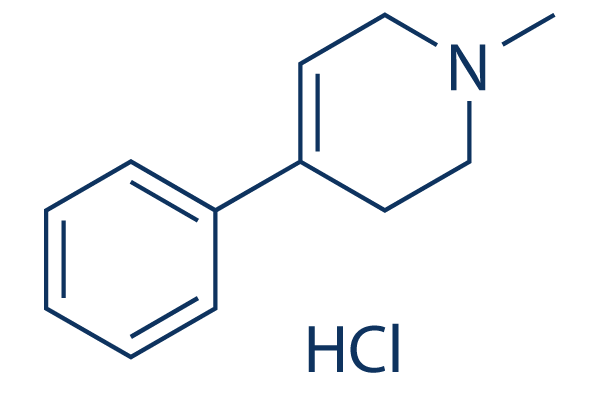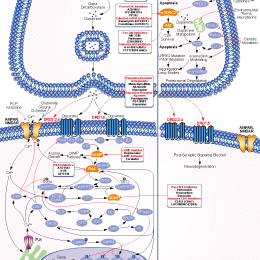
- 阻害剤
- 研究分野別
- PI3K/Akt/mTOR
- Epigenetics
- Methylation
- Immunology & Inflammation
- Protein Tyrosine Kinase
- Angiogenesis
- Apoptosis
- Autophagy
- ER stress & UPR
- JAK/STAT
- MAPK
- Cytoskeletal Signaling
- Cell Cycle
- TGF-beta/Smad
- 化合物ライブラリー
- Popular Compound Libraries
- Customize Library
- Clinical and FDA-approved Related
- Bioactive Compound Libraries
- Inhibitor Related
- Natural Product Related
- Metabolism Related
- Cell Death Related
- By Signaling Pathway
- By Disease
- Anti-infection and Antiviral Related
- Neuronal and Immunology Related
- Fragment and Covalent Related
- FDA-approved Drug Library
- FDA-approved & Passed Phase I Drug Library
- Preclinical/Clinical Compound Library
- Bioactive Compound Library-I
- Bioactive Compound Library-Ⅱ
- Kinase Inhibitor Library
- Express-Pick Library
- Natural Product Library
- Human Endogenous Metabolite Compound Library
- Alkaloid Compound LibraryNew
- Angiogenesis Related compound Library
- Anti-Aging Compound Library
- Anti-alzheimer Disease Compound Library
- Antibiotics compound Library
- Anti-cancer Compound Library
- Anti-cancer Compound Library-Ⅱ
- Anti-cancer Metabolism Compound Library
- Anti-Cardiovascular Disease Compound Library
- Anti-diabetic Compound Library
- Anti-infection Compound Library
- Antioxidant Compound Library
- Anti-parasitic Compound Library
- Antiviral Compound Library
- Apoptosis Compound Library
- Autophagy Compound Library
- Calcium Channel Blocker LibraryNew
- Cambridge Cancer Compound Library
- Carbohydrate Metabolism Compound LibraryNew
- Cell Cycle compound library
- CNS-Penetrant Compound Library
- Covalent Inhibitor Library
- Cytokine Inhibitor LibraryNew
- Cytoskeletal Signaling Pathway Compound Library
- DNA Damage/DNA Repair compound Library
- Drug-like Compound Library
- Endoplasmic Reticulum Stress Compound Library
- Epigenetics Compound Library
- Exosome Secretion Related Compound LibraryNew
- FDA-approved Anticancer Drug LibraryNew
- Ferroptosis Compound Library
- Flavonoid Compound Library
- Fragment Library
- Glutamine Metabolism Compound Library
- Glycolysis Compound Library
- GPCR Compound Library
- Gut Microbial Metabolite Library
- HIF-1 Signaling Pathway Compound Library
- Highly Selective Inhibitor Library
- Histone modification compound library
- HTS Library for Drug Discovery
- Human Hormone Related Compound LibraryNew
- Human Transcription Factor Compound LibraryNew
- Immunology/Inflammation Compound Library
- Inhibitor Library
- Ion Channel Ligand Library
- JAK/STAT compound library
- Lipid Metabolism Compound LibraryNew
- Macrocyclic Compound Library
- MAPK Inhibitor Library
- Medicine Food Homology Compound Library
- Metabolism Compound Library
- Methylation Compound Library
- Mouse Metabolite Compound LibraryNew
- Natural Organic Compound Library
- Neuronal Signaling Compound Library
- NF-κB Signaling Compound Library
- Nucleoside Analogue Library
- Obesity Compound Library
- Oxidative Stress Compound LibraryNew
- Phenotypic Screening Library
- PI3K/Akt Inhibitor Library
- Protease Inhibitor Library
- Protein-protein Interaction Inhibitor Library
- Pyroptosis Compound Library
- Small Molecule Immuno-Oncology Compound Library
- Mitochondria-Targeted Compound LibraryNew
- Stem Cell Differentiation Compound LibraryNew
- Stem Cell Signaling Compound Library
- Natural Phenol Compound LibraryNew
- Natural Terpenoid Compound LibraryNew
- TGF-beta/Smad compound library
- Traditional Chinese Medicine Library
- Tyrosine Kinase Inhibitor Library
- Ubiquitination Compound Library
-
Cherry Picking
You can personalize your library with chemicals from within Selleck's inventory. Build the right library for your research endeavors by choosing from compounds in all of our available libraries.
Please contact us at [email protected] to customize your library.
You could select:
- 抗体
- 新製品
- お問い合わせ
MPTP hydrochloride
MPTP hydrochloride is a dopaminergic neurotoxin and cause selective destruction of dopaminergic neurons in animal models of parkinsonism. MPTP hydrochloride induces apoptosis.

CAS No. 23007-85-4
文献中Selleckの製品使用例(17)
製品安全説明書
現在のバッチを見る:
純度:
99.94%
99.94
MPTP hydrochloride関連製品
シグナル伝達経路
Dopamine Receptor阻害剤の選択性比較
Cell Data
| Cell Lines | Assay Type | Concentration | Incubation Time | 活性情報 | PMID |
|---|---|---|---|---|---|
| insect cells | Function assay | 120 mins | Inhibition of human recombinant MAOA expressed in insect cells assessed as oxidation of kynuramine substrate at 50 uM measured after additional enzyme added after 120 mins incubation | 22078410 | |
| insect cells | Function assay | 90 mins | Inhibition of human recombinant MAOA expressed in insect cells assessed as oxidation of kynuramine substrate at 50 uM measured after additional substrate added after 90 mins incubation | 22078410 | |
| 他の多くの細胞株試験データをご覧になる場合はこちらをクリックして下さい | |||||
生物活性
| 製品説明 | MPTP hydrochloride is a dopaminergic neurotoxin and cause selective destruction of dopaminergic neurons in animal models of parkinsonism. MPTP hydrochloride induces apoptosis. |
|---|
| In Vitro | ||||
| In vitro | The morphology of N2AB-1 and glioma cells was unaltered when these cells were exposed to all doses of MPTP. And, C6 glioma cell proliferation was also unaffected by MPTP treatment[3]. MPTP Promotes Apoptosis and Tau Phosphorylation in Human Neuroblastoma M17 Cells. MPTP significantly promotes Tau phosphorylation at Ser262 in human neuroblastoma M17 cells. MPTP caused a dose-dependent increase in the intracellular α-synuclein level in our M17 human neuroblastoma cells. MPTP appears to promote Tau phosphorylation in the brain by activating both PKA and GSK3β[4]. | |||
|---|---|---|---|---|
| 細胞実験 | 細胞株 | N2AB-1 neural cell line and the C6 glioma cell line | ||
| 濃度 | 47.7, 4.77 and 0.477 μM | |||
| 反応時間 | 1, 2, 3 days | |||
| 実験の流れ | N2AB-1 and C6 glioma cells were plated in 24-well costar dishes (16 mm diameter) at 50,000 cells per well with the culture medium described above. After 24 h medium was removed and medium with varying concentrations of MPTP or MPP+ was added in duplicate. Control and treated cells were then trypsinized and counted with a hemocytometer every day for 3 days following treatment. |
|||
| 実験結果図 | Methods | Biomarkers | 結果図 | PMID |
| Western blot | TH / Actin pCaMKIIβ / pCaMKIIα / CaMKIIβ / CaMKIIα / β-Actin TH / p-α-Syn / α-Syn / β-actin / CDK5 / LC3-I / LC3-II / p62 / NLRP3 / ASC / Casp1 p20 / Procasp1 p-ERK1/2 / ERK1/2 / GAPDH GDH2 / GDH1 / GFAP / GAPDH |

|
23391753 | |
| IHC | tyrosine hydroxylase (TH) tyrosine hydroxylase (TH) SNpc tyrosine hydroxylase (TH) Substantia nigra |

|
31427934 | |
| Immunofluorescence | tyrosine hydroxylase (TH) / miR-188-3p α-Syn tyrosine hydroxylase (TH) / Tunel tyrosine hydroxylase (TH) / Tunel tyrosine hydroxylase (TH) GFAP |

|
33717653 | |
| In Vivo | ||
| In Vivo | The number of tyrosine hydroxylase-positive neurons was decreased in the substantia nigra pars compacta of MPTP-treated mice. MPTP decreased thioredoxin reductase 1 expression and thioredoxin reductase activity in the mouse midbrain, reduced the number of thioredoxin reductase 1-positive cells in the substantia nigra pars compacta of mice. Administration of the toxin MPTP can cause neurochemical, behavioral and histopathological alterations in human and nonhuman primates that are similar to those observed in Parkinsonian patients. Compared with primates, rodents are insensitive to MPTP. MPTP can be administered by various routes, such as gavage and stereotactic injection, but the most common and reproducible route is systemic administration, including subcutaneous, intravenous, intraperitoneal and intramuscular injection. MPTP is a lipophilic protoxin that can rapidly cross the blood-brain barrier following systemic injection. Once it enters the brain, MPTP is converted to 1-methyl-4-phenylpyridine by monoamine oxidase B[1]. MPTP has been shown to be toxic to dopaminergic neurons of the nigrostriatal system in humans, monkeys, and mice and to produce long-lasting depletion of DA and its metabolites in the striatum[2]. | |
|---|---|---|
| 動物実験 | 動物モデル | C57BL/6 mice |
| 投与量 | 20 mg/kg | |
| 投与経路 | i.p. | |
化学情報
| 分子量 | 209.72 | 化学式 | C12H15N·HCl |
| CAS No. | 23007-85-4 | SDF | Download MPTP hydrochloride SDFをダウンロードする |
| Smiles | CN1CCC(=CC1)C2=CC=CC=C2.Cl | ||
| 保管 | |||
|
In vitro |
Water : 41 mg/mL Ethanol : 41 mg/mL DMSO : 26 mg/mL ( (123.97 mM); 吸湿したDMSOは溶解度を減少させます。新しいDMSOをご使用ください。) |
モル濃度計算器 |
|
in vivo Add solvents to the product individually and in order. |
投与溶液組成計算機 | ||||
実験計算
投与溶液組成計算機(クリア溶液)
ステップ1:実験データを入力してください。(実験操作によるロスを考慮し、動物数を1匹分多くして計算・調製することを推奨します)
mg/kg
g
μL
匹
ステップ2:投与溶媒の組成を入力してください。(ロット毎に適した溶解組成が異なる場合があります。詳細については弊社までお問い合わせください)
% DMSO
%
% Tween 80
% ddH2O
%DMSO
%
計算結果:
投与溶媒濃度: mg/ml;
DMSOストック溶液調製方法: mg 試薬を μL DMSOに溶解する(濃度 mg/mL, 注:濃度が当該ロットのDMSO溶解度を超える場合はご連絡ください。 )
投与溶媒調製方法:Take μL DMSOストック溶液に μL PEG300,を加え、完全溶解後μL Tween 80,を加えて完全溶解させた後 μL ddH2O,を加え完全に溶解させます。
投与溶媒調製方法:μL DMSOストック溶液に μL Corn oil,を加え、完全溶解。
注意:1.ストック溶液に沈殿、混濁などがないことをご確認ください;
2.順番通りに溶剤を加えてください。次のステップに進む前に溶液に沈殿、混濁などがないことを確認してから加えてください。ボルテックス、ソニケーション、水浴加熱など物理的な方法で溶解を早めることは可能です。
技術サポート
ストックの作り方、阻害剤の保管方法、細胞実験や動物実験の際に注意すべき点など、製品を取扱う時に問い合わせが多かった質問に対しては取扱説明書でお答えしています。
他に質問がある場合は、お気軽にお問い合わせください。
* 必須
Tags: MPTP hydrochlorideを買う | MPTP hydrochloride ic50 | MPTP hydrochloride供給者 | MPTP hydrochlorideを購入する | MPTP hydrochloride費用 | MPTP hydrochloride生産者 | オーダーMPTP hydrochloride | MPTP hydrochloride化学構造 | MPTP hydrochloride分子量 | MPTP hydrochloride代理店

